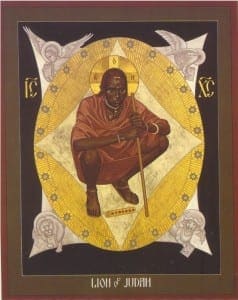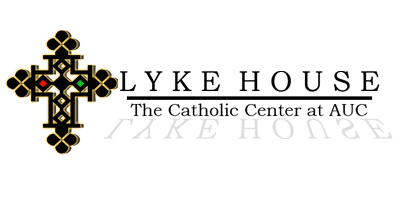
The center’s biblical title, The Lion of Judah, which is taken from the fifth chapter of the Book of Revelations (Revelations 5: 5 – “…do not weep; the lion of the tribe of Judah, the root of David, has triumphed…”), is a primary image that is emphasized heavily at the center. It is both scriptural and African in that it plays off of the Ethiopian tradition of calling its royal heirs by the same title. By capitalizing on this Christic title, we associate all Christians with the royal priesthood of Jesus and its legacy.
In this icon depicting the Lion of Judah, Christ is a Maasai warrior, instead of a Greek philosopher. When Christ appeared to Mary Magdalene and to the disciples walking to Emmaus, after his resurrection, these close friends could not recognize him. Perhaps his resurrected body had changed and had taken on a more cosmic quality. Again, in Matthew 24, Jesus has told us that he has often appeared to us in the hungry, naked, homeless, and imprisoned, and we did not recognize him. At the end of the world, when he comes in glory, will we recognize the Lion of Judah, or will our pre-conceived notions blind us? Do we recognize him now, in our daily lives?
Christ is enthroned in a series of spheres and squares, which represent the way he has joined together time and eternity. The cross inside his halo bears the Greek letters for “I am who am,” the divine name given to Moses at the burning bush. The gold letters in the upper part of the icon are Greek abbreviations for “Jesus Christ.” The four winged creatures each hold a Gospel book, for they represent the four evangelists: the lion, Mark; the ox, Luke; the eagle, John; and the human, Matthew. The twenty-four stars around Jesus Christ represent the twelve tribes of Israel, and the twelve apostles.
